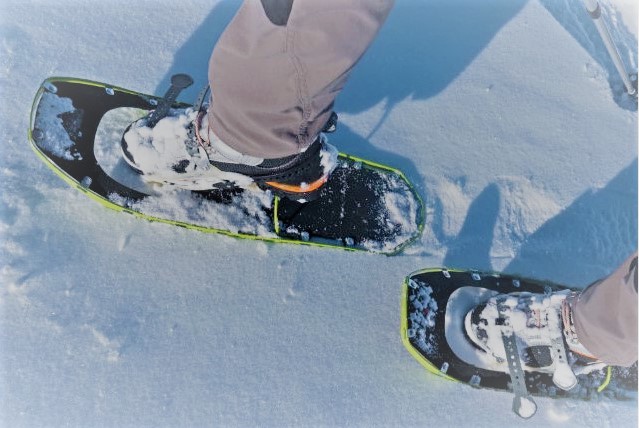With the arrival of winter and the corresponding snowfalls, all mountain-lovers dream of putting on snowshoes and access more comfortably and safely to those wonderful landscapes covered by a white blanket. Places where it would be impossible -or very painful- to go if you didn’t have this accessory… Would you like to go hiking with snowshoes but you don’t know what to consider when choosing them? Well, that’s what we’re here for…
Advantages and limitations of snowshoes

Advantages
- They will allow you to walk in deep snow with greater comfort, safety, and speed than without them. That’s why they are an alternative to ski mountaineering in places like the Pyrenees.
- They are not expensive and do not require great technical training. On our website, you can find snowshoes from 50 euros (for beginners) to about 220 euros (the most technical).
- With the right model and enough technique, you can make unforgettable experiences in pleasant walks through low and medium mountain landscapes that are even cooler when they are snowy.
Limitations
- Keep in mind that this type of snowshoe works well mostly in cold, powdery, dry snow. If those snow conditions are not present, they are not suitable for use.
- Snowshoes are for snowshoeing, not for moving through hard or icy snow, and certainly not for climbing steep slopes. That is what crampons are for.
Buying tips
BEFORE YOU BUY, TRY THEM OUT.
Snowshoes are not something you just buy and see what happens, since the sensation of walking with them can end up making you passionate, or not. Maybe you can rent them first at a ski resort and, if you like the activity and learn how to use them correctly, you can buy them with the certainty that you will get the most out of them.
WATCH OUT FOR THE RECOMMENDED LOAD
Snowshoes can support a weight from 20 kg (for small children) to 120 kg (large adults). Always remember that in order to correctly assess the figure that appears on the technical data sheets of the products (the recommended load) you must take into account your weight plus the weight of the backpack you are carrying.
Otherwise, they will either not work as well as they could or they will last less than they could.
GET ADVICE FROM FORUM SPORT ABOUT THE TYPE OF BINDING THAT IS BEST FOR YOU:
Body, straps or automatic? The first two are compatible with almost any type of boot and the last one only with technical footwear with heel-toe grooves.
RACKS
Higher quality frames for somewhat technical terrain usually mean that the pair of snowshoes weighs 1.8-1.9 kg and are made of sophisticated polymers, composites and even aluminum or manganese for expedition/exploration type snowshoes.
Cheap plastic frames can split prematurely at around -5°C or if you carry a heavy backpack.
In both cases, unless you are experienced, make sure they are not too big, because although their buoyancy increases with greater surface area, you may trip when walking with them. In addition, the tread will be more unnatural.
